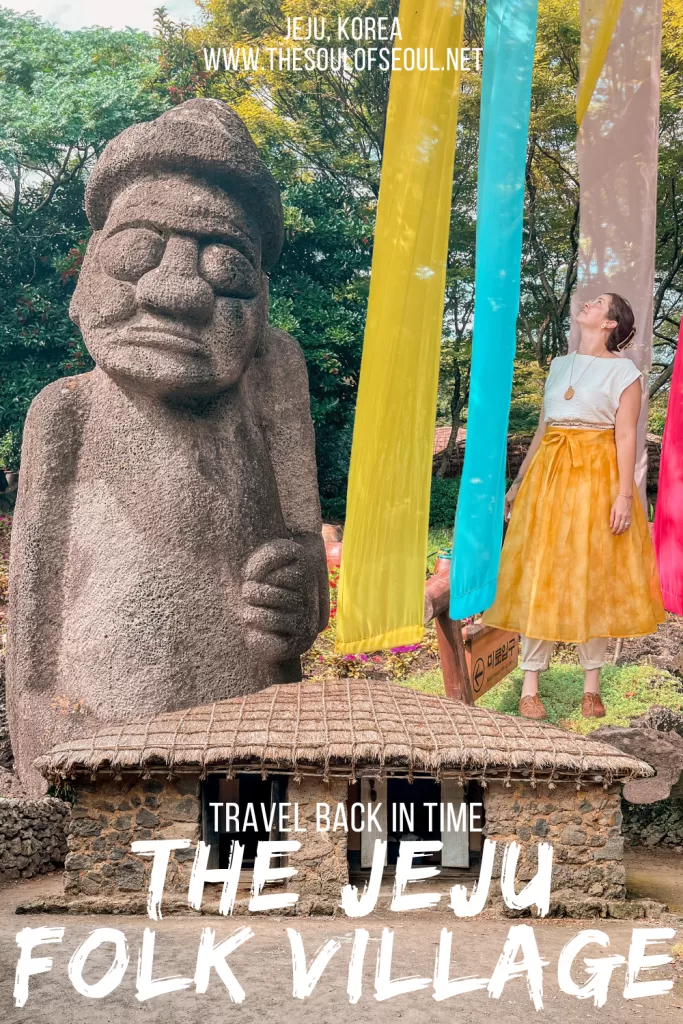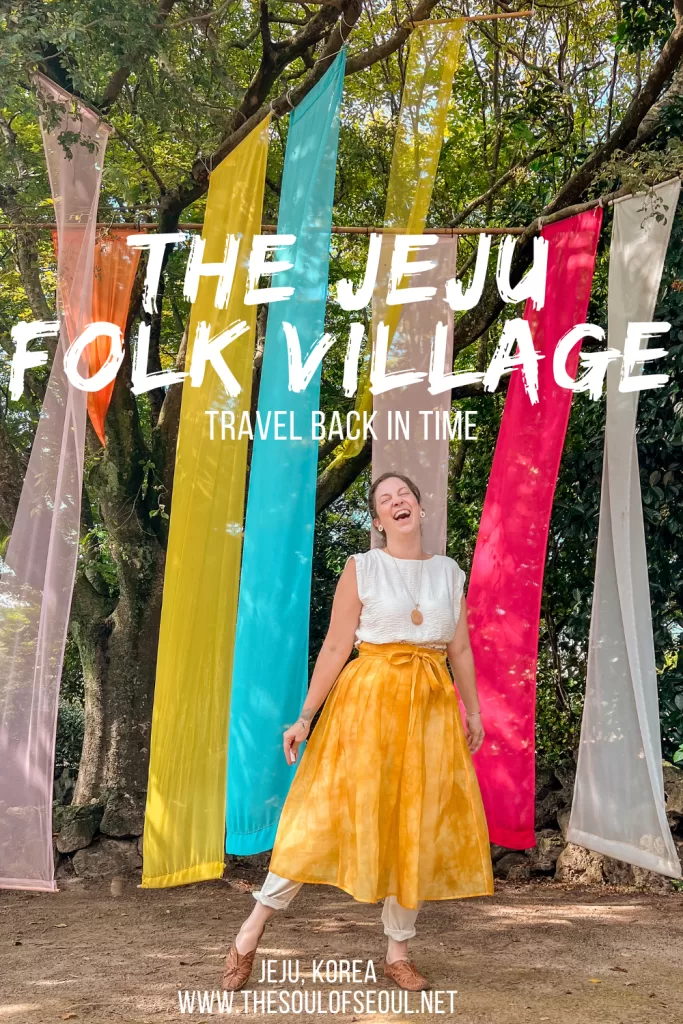Travel Back In Time At The Jeju Folk Village
Last Updated on September 30, 2024
There are some amazing traditional folk villages in Korea, and the Jeju Folk Village (제주민속촌) definitely makes the list. There are more than 100 houses that were actual residences and they’ve tried to portray what time was like in the 1890s on Jeju Island.
An interesting thing about this folk village is that it brings together mountain villages and fishing villages among other different living spaces into one place. So it feels like a few villages instead of just one. You could easily spend a few hours here not just looking, but also getting in on the traditional experiential action.
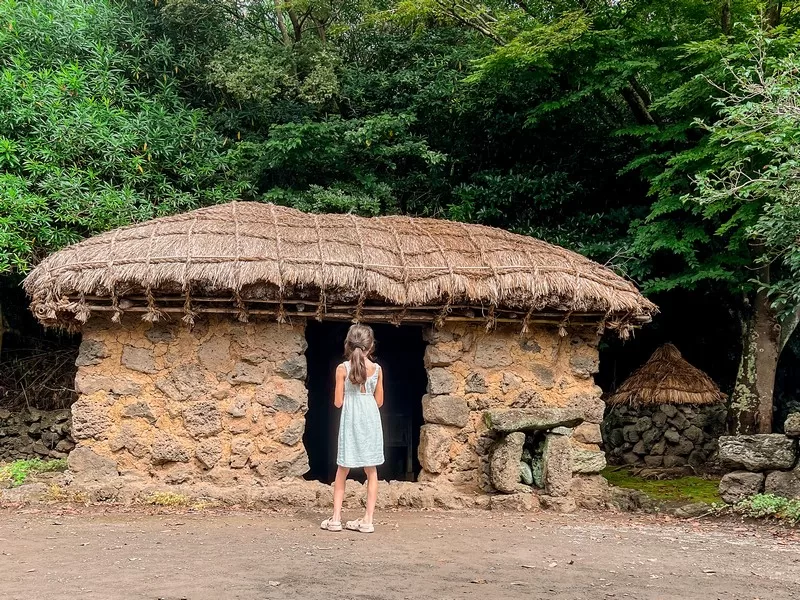
If you’re looking for things to do with kids in Jeju, this is a fantastic opportunity for experiential learning with plenty to do and lots to learn.
Plan a trip to the Jeju Folk Village when you’re on Jeju Island:
- Basic Info
- History and Culture From the 1890s
- Free Experiences Around Every Corner
- More Intricate Experiences Too
- Maze Garden
- Where To Eat
(This post contains affiliate links, which means I receive a certain percentage of a sale if you purchase after clicking at no cost to you. Thank you for your support.)
Basic Info
Address: 631-34 Minsokhaean-ro, Pyoseon-myeon, Seogwipo-si, Jeju-do (제주특별자치도 서귀포시 표선면 민속해안로 631-34)
Hours: April – September: 8:30am ~ 6:00pm; October – February: 8:30am ~ 5:00pm; March: 8:30am ~ 5:30pm
Admission: Adults: W15,000; Children (Middle School – High School): W12,000; Children (4 – Elementary Age): W11,000
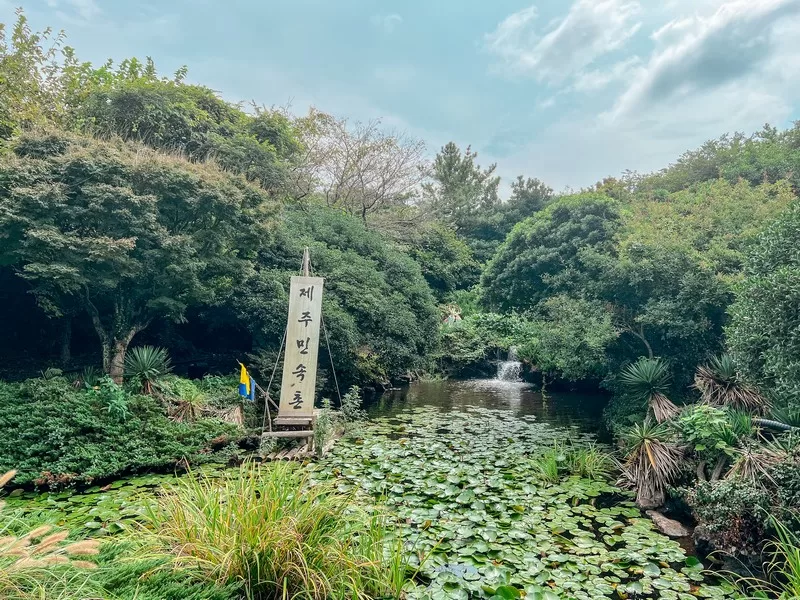
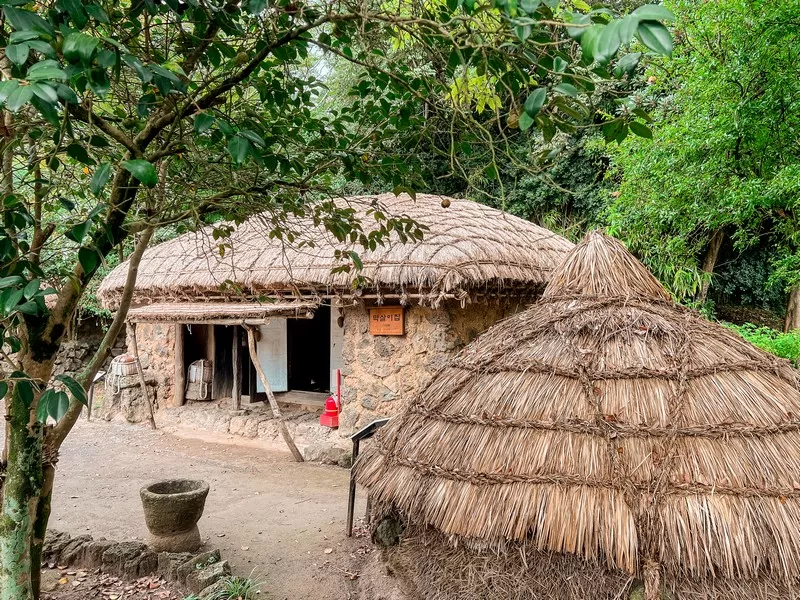
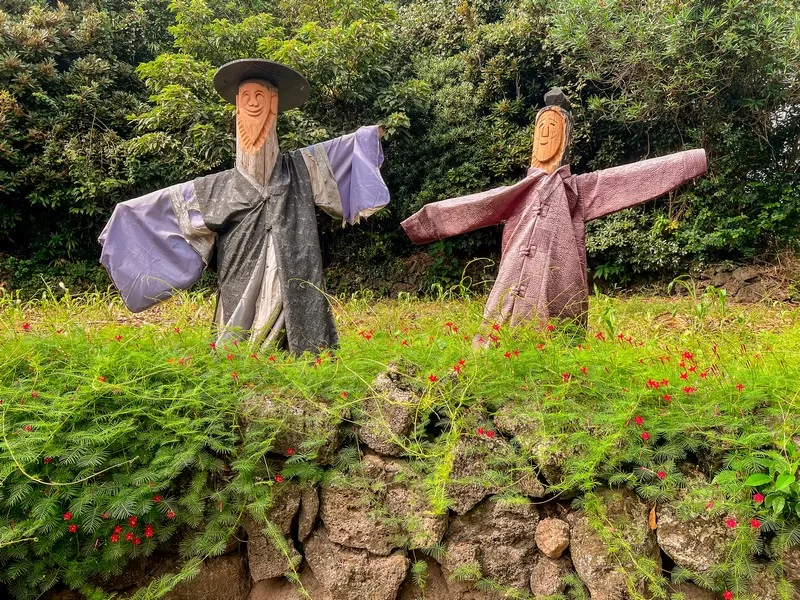
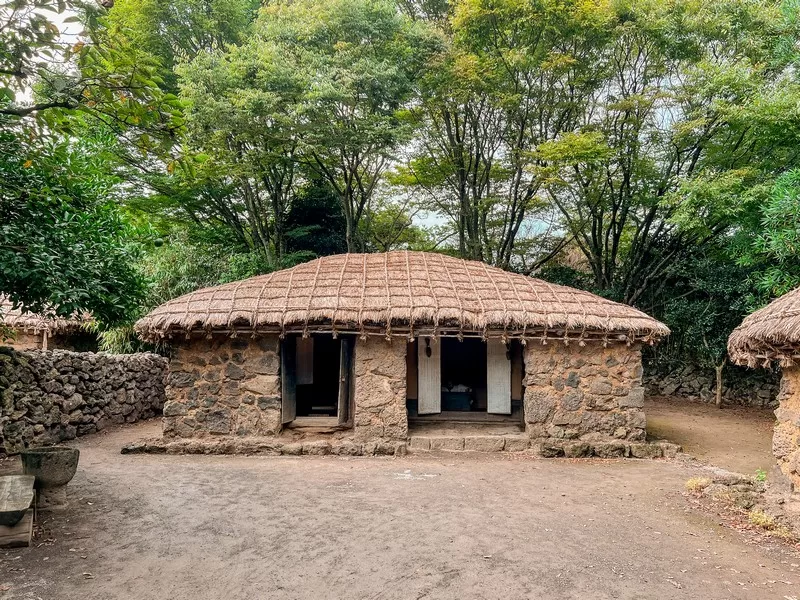
History and Culture From the 1890s
Jeju Folk Village has comprehensively organized Jeju’s traditional folklore materials by setting 1890, the end of the Joseon Dynasty, as its base year. It is a place where Jeju’s folk culture is preserved, where you can enjoy the lush nature of Jeju Island, and where Jeju’s culture can be compared and contrasted to mainland culture.
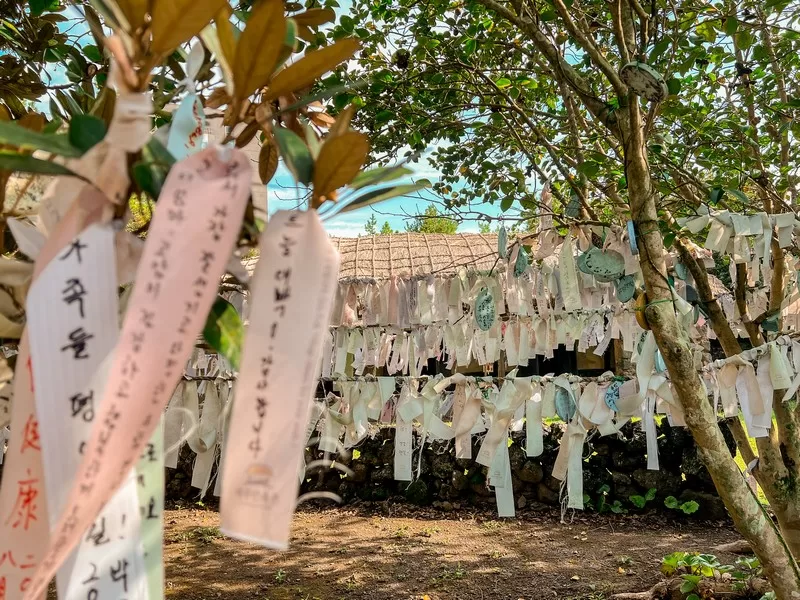
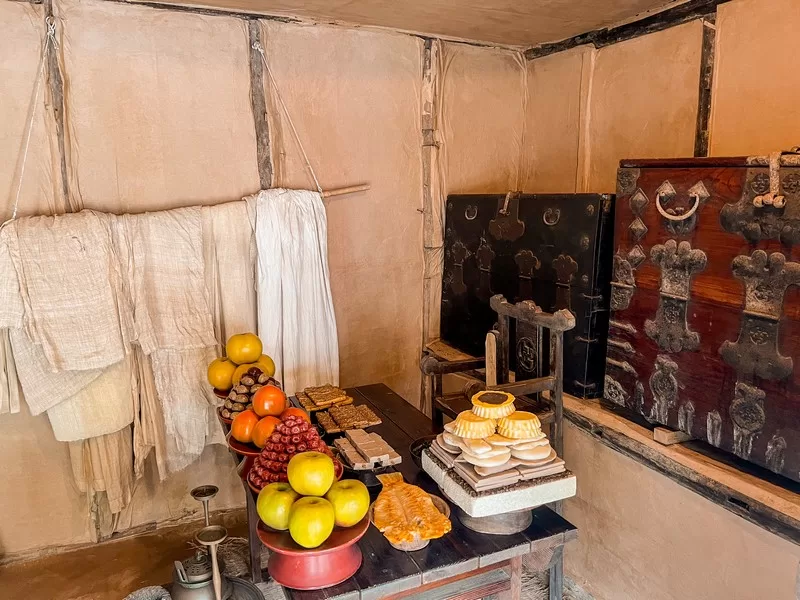
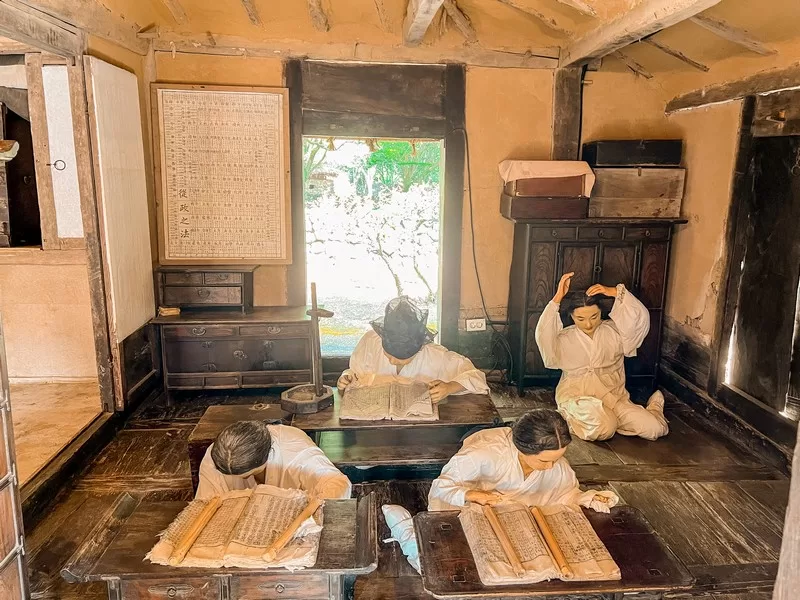
There’s a mountain village area, hill country village, fishing village, and shamanism village. It’s really interesting to see the differences in homes which may seem subtle to some but if you know what to look for, you’ll find them.
Free Experiences Around Every Corner
Walk through the complex and there is something experiential in each village area and plenty to learn. You could breeze through the entire folk village quickly, but you should absolutely take your time, read the placards which have information in Korean, English, Chinese, and Japanese, and jump right in to experience everything you can.
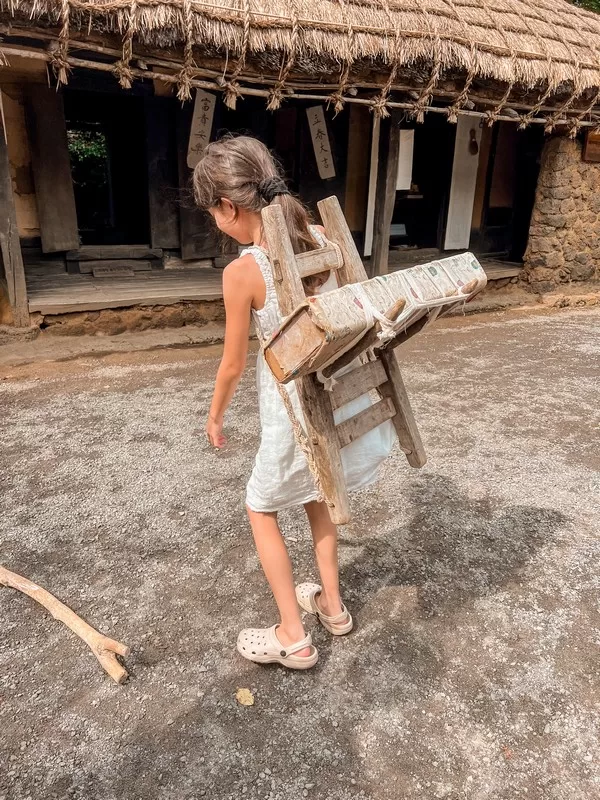
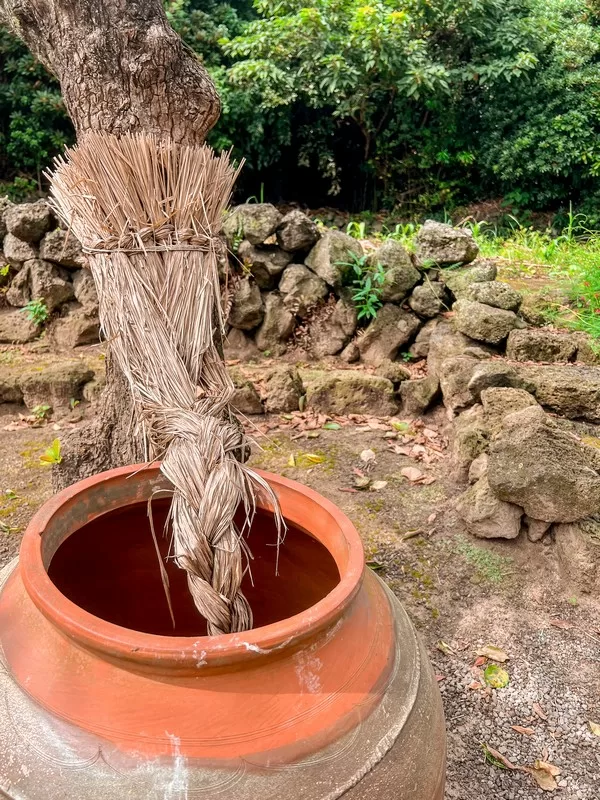
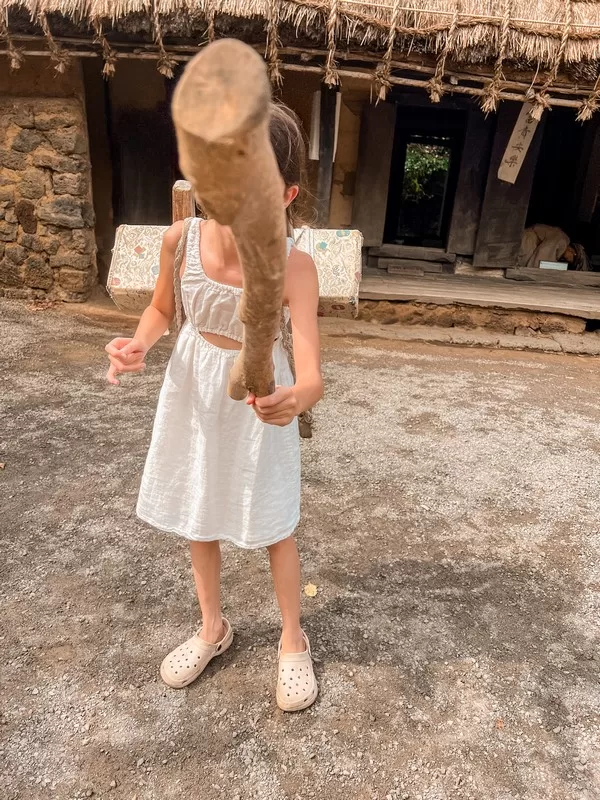
There are different traditional beliefs and activities in each area. If you have kids, they’ll have a great time trying to sort out how to utilize the various traditional goods.
Check out the chomang (촘항), a jar to collect rainwater for dewdrops to use as potable water. Try on the jige (지게), a traditional pack frame used to carry large quantities of heavy materials.
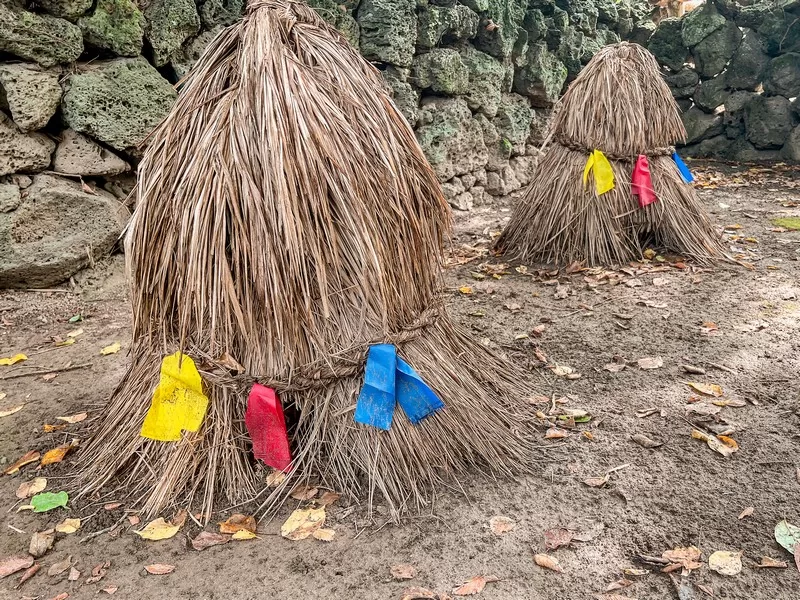
There are a ton of items on display to learn about traditional life specific to Jeju island at the end of the 1800s. Look for the chilseongnul (칠성눌) which was used to protect cereal crops and worship a snake god that brings richness.
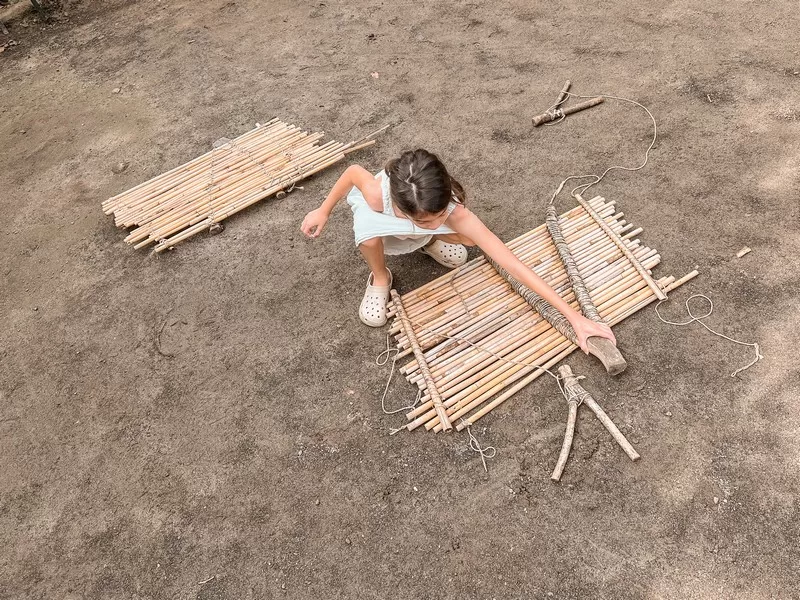
See if you can set up the jokdeot (족덫), a trap to catch mice or weasels that would appear to steal crops. Talk about life skills. Life-like dolls help to explain what the buildings were used for, how people looked, and how they interacted in these spaces back in the day.
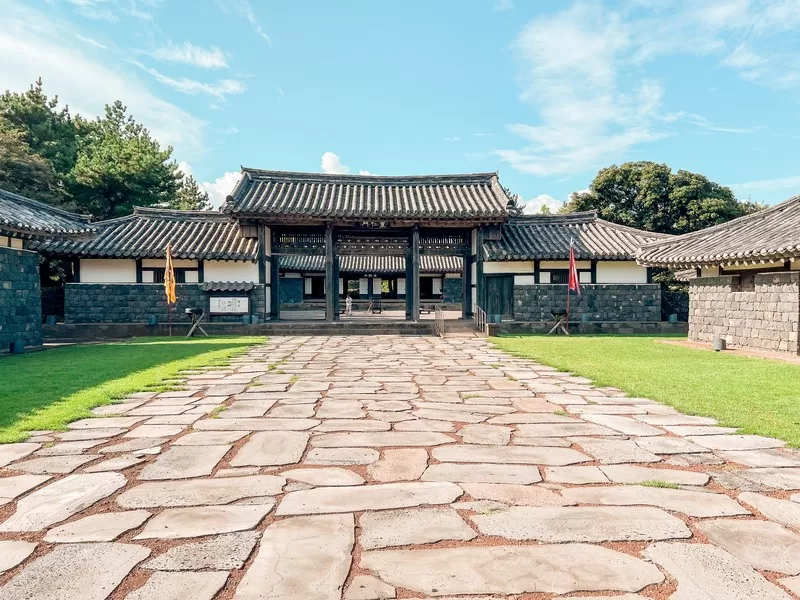
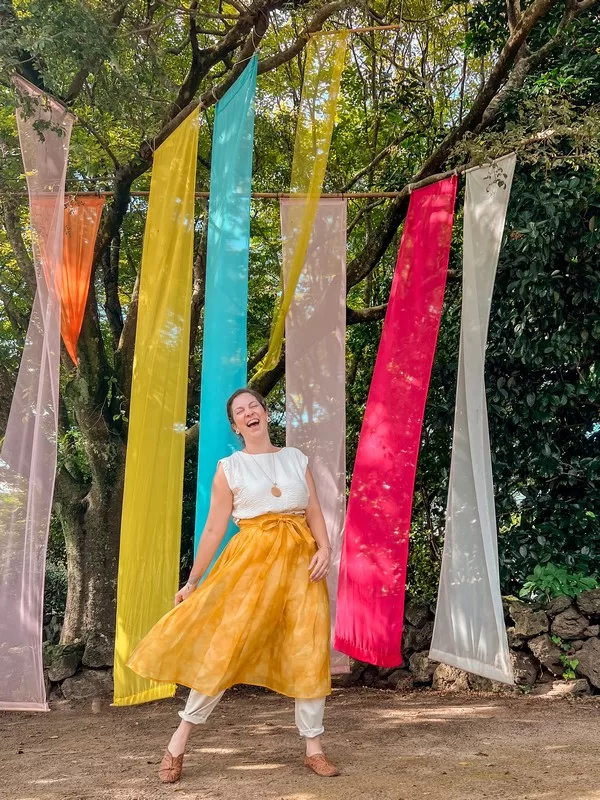
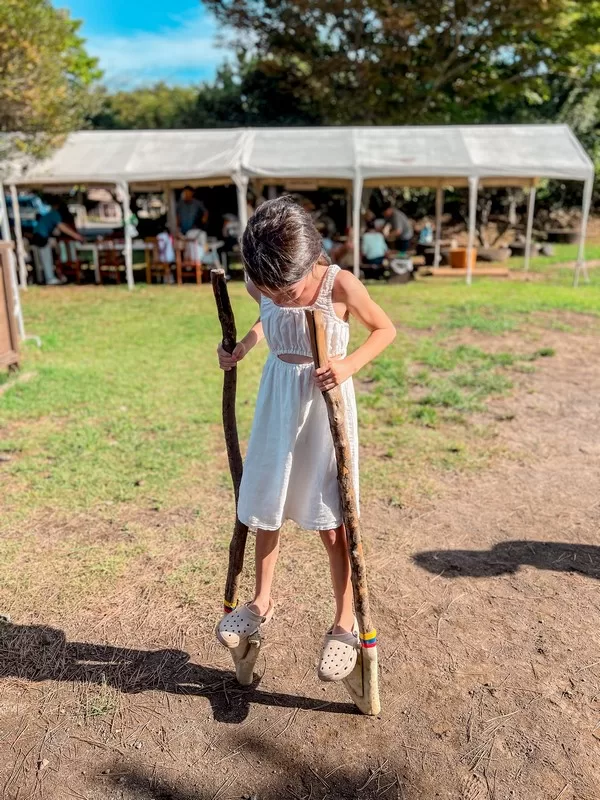
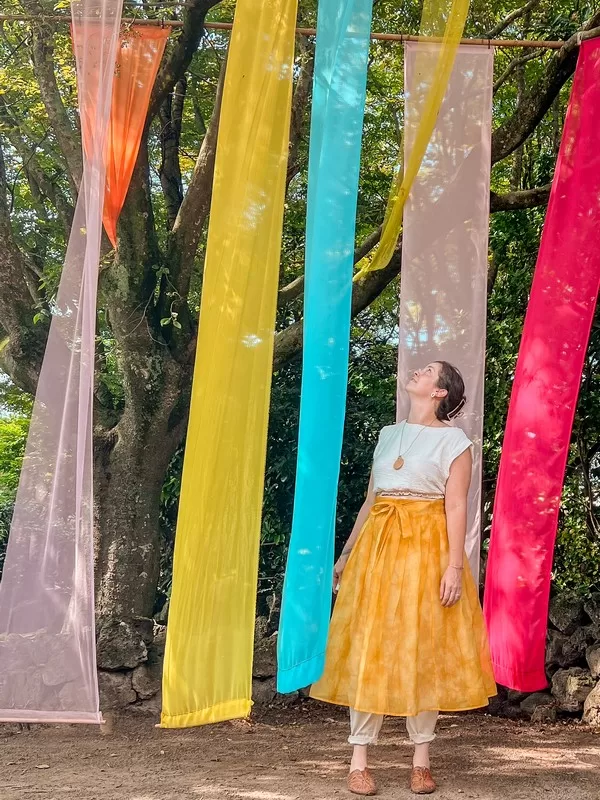
There are traditional games in a number of buildings, and in an open lawn area near the Jeju Jungmun, there are more traditional games and fun to have. Don’t just walk by and if you have kids, definitely let them jump in and see if they can figure out how to walk on stilts, get arrows in canisters in a game of tuho and more.
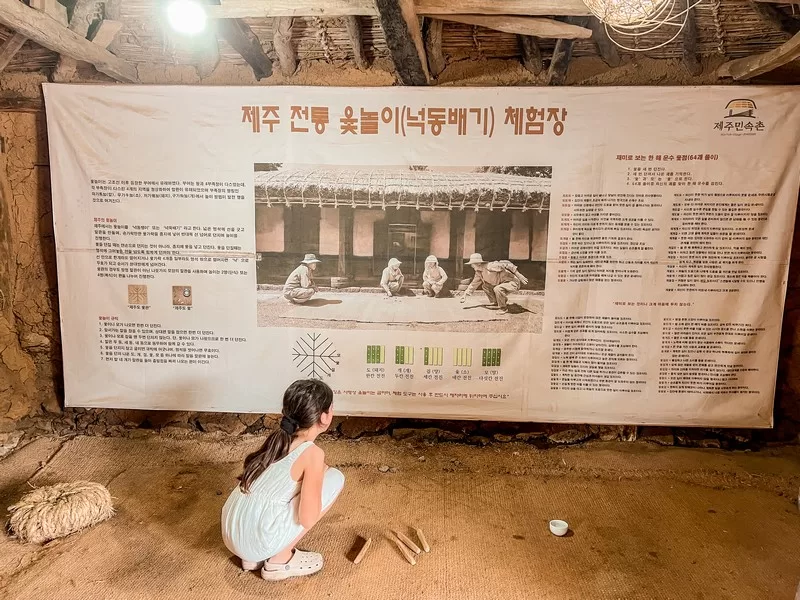
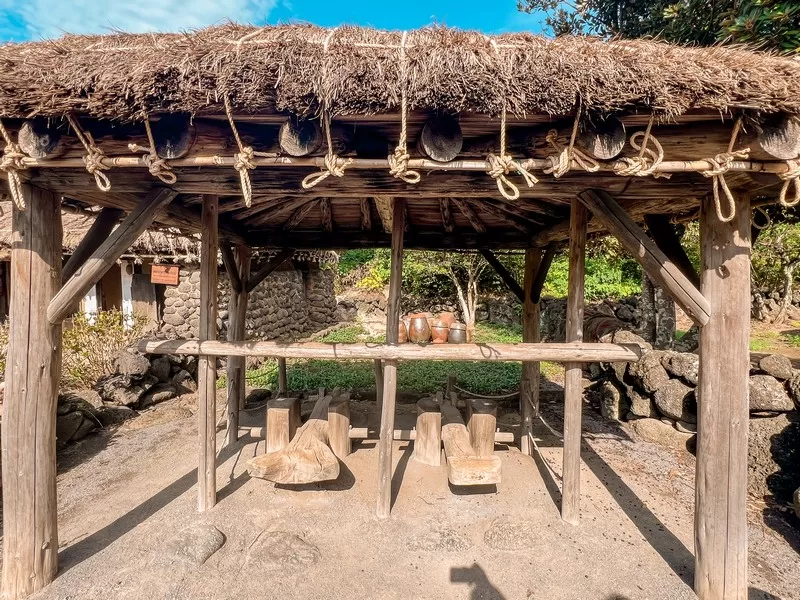
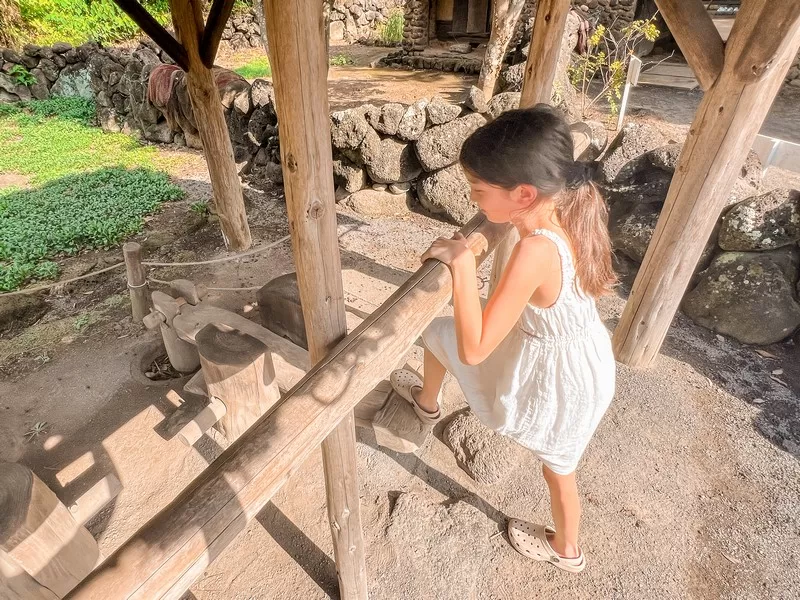
Move through the Mountain Village to the Medium-high Mountain Village, to the Fishing Village finding the free experiences and directions for how to do them on placards. From games to manual labor, there’s a lot to do.
More Intricate Experiences Too
For a small fee, there are also various buildings that house more intricate or time-consuming experiences. There are wood crafts, letter engraving, and pottery.
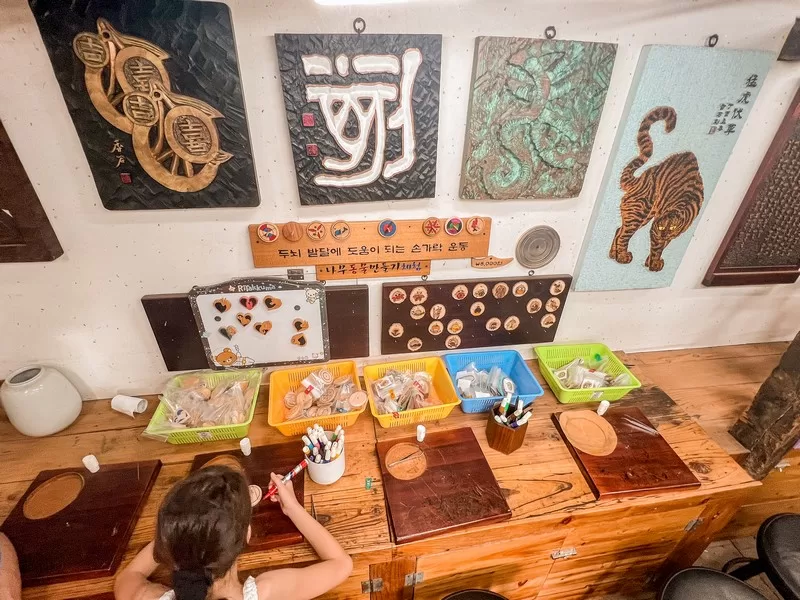
In one building we found a place to make a wooden top that spins far better than any plastic top I’ve ever tried. Our daughter got to decorate it and watch it get put together. It was a bonus that this space was air-conditioned as we visited on a rather hot day.
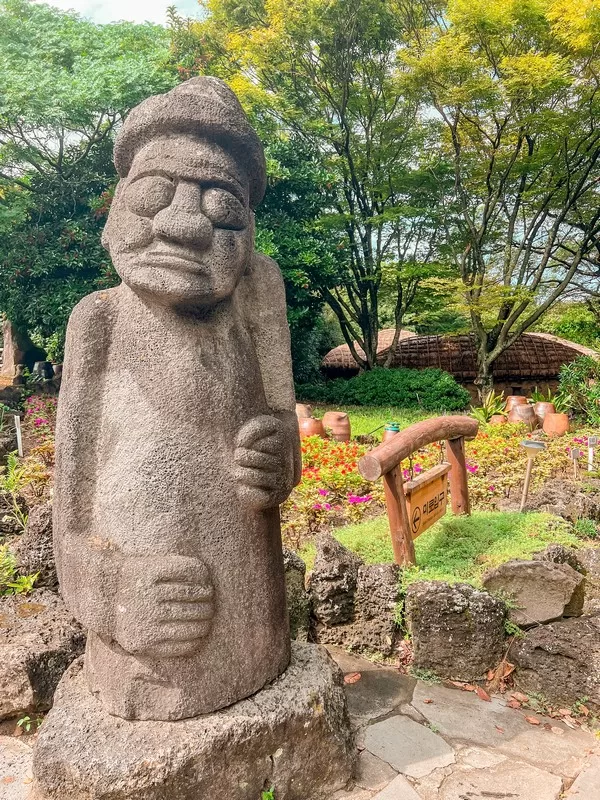
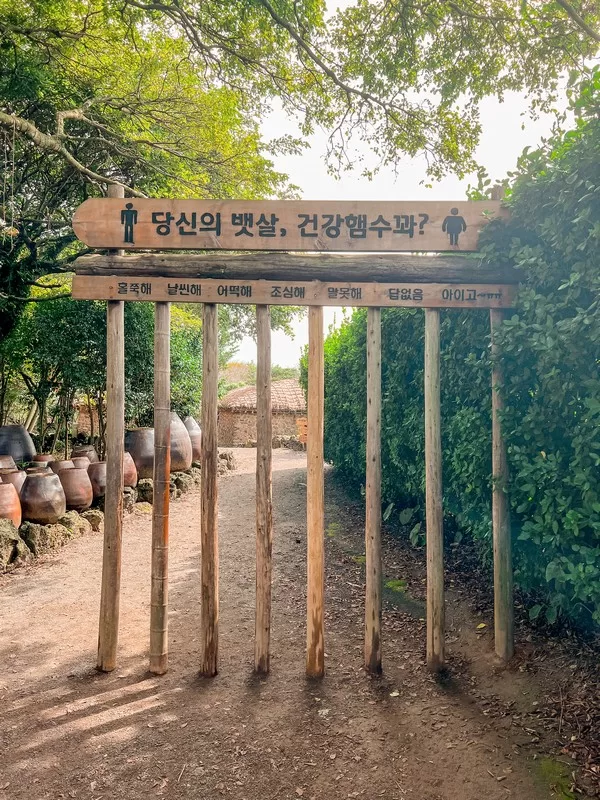
Maze Garden
There is also a little maze that’s in the shape of an okdom, a native Jeju fish. Head in and see if you can get out. Of course, before you head in there, you can see how healthy or not so health you are in the awkward way that only Korea would provide. Feel free to just sidestep that part of the installation.
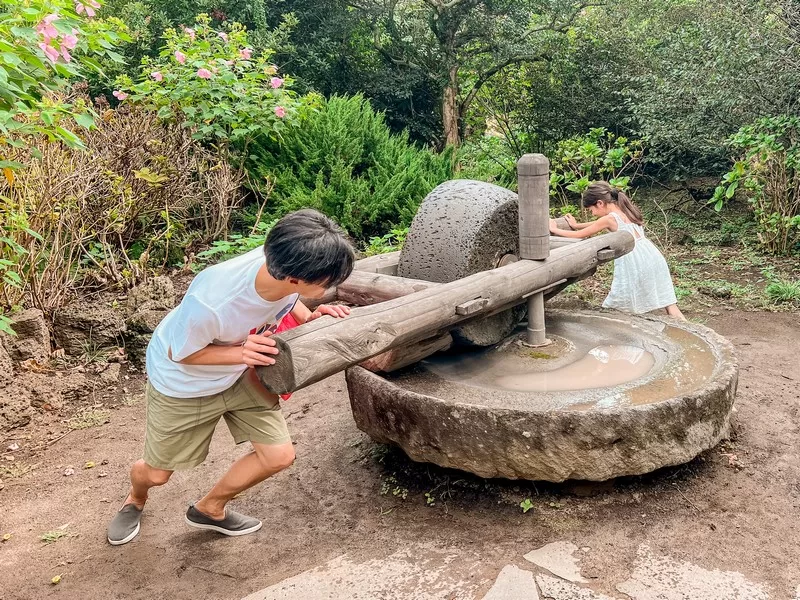
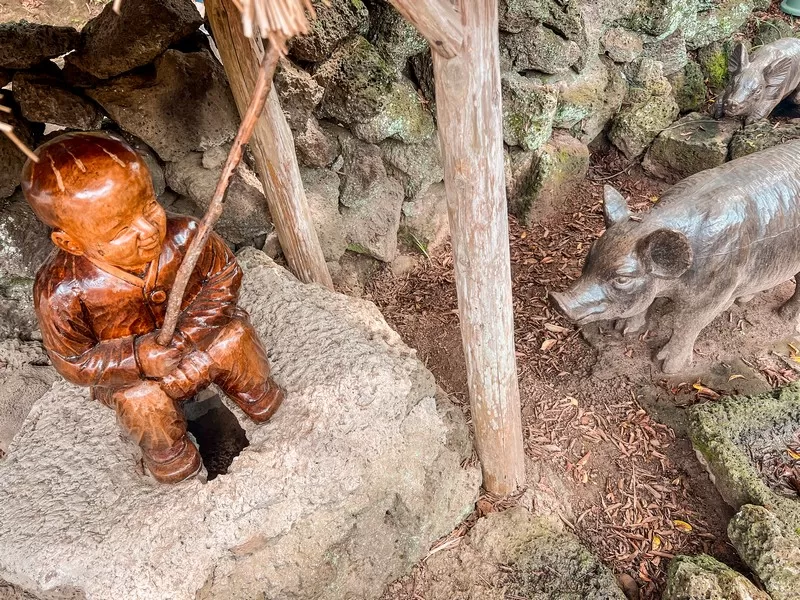
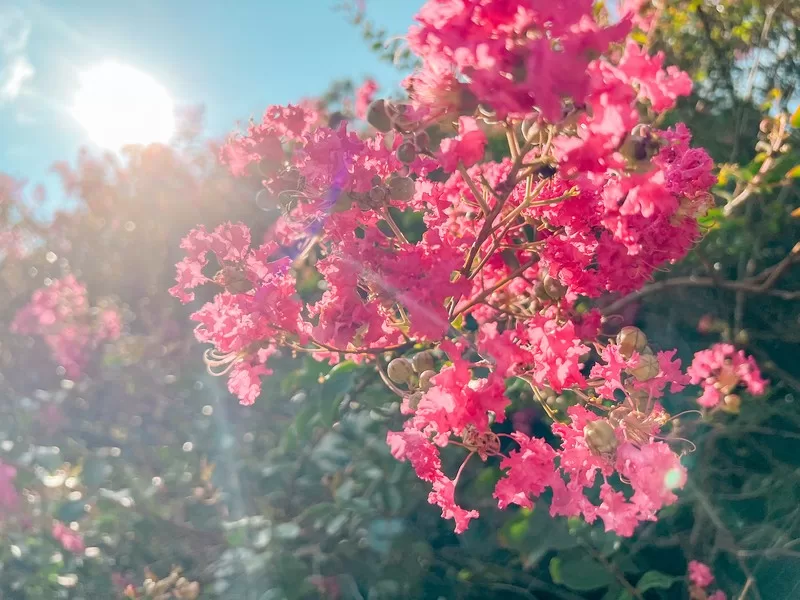
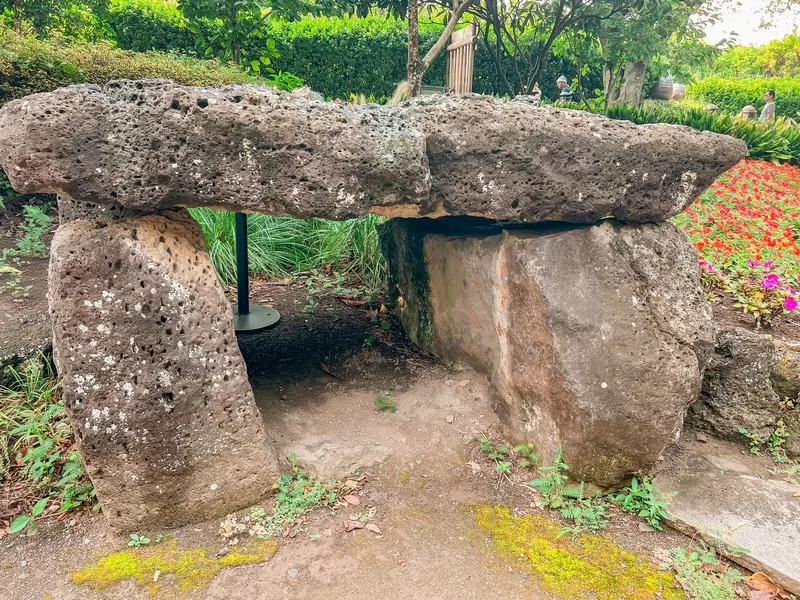
Where To Eat
There is a restaurant which we ate at that is apart of the complex but just before you actually pay to enter. If you don’t eat there like we did, inside, there is a Folk Market area with a fried chicken and beer restaurant as well as a street food restaurant and a soup and jeon option too.
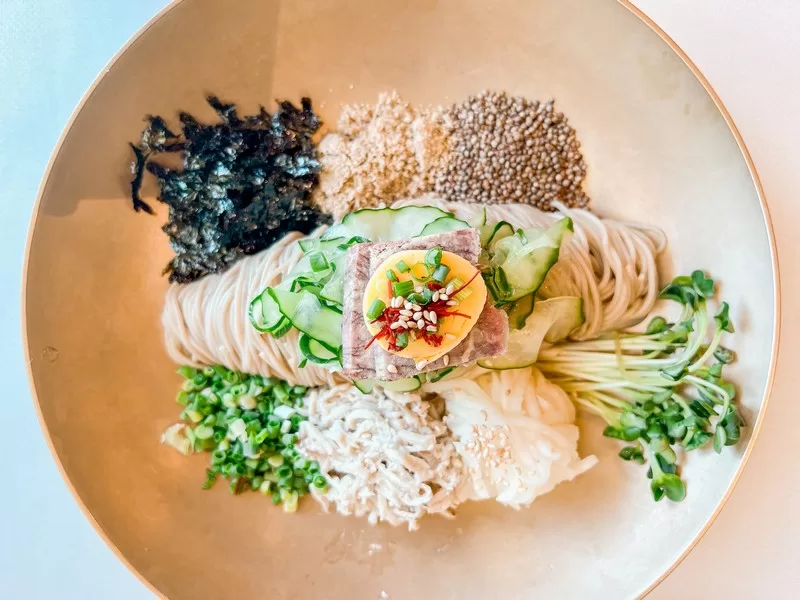
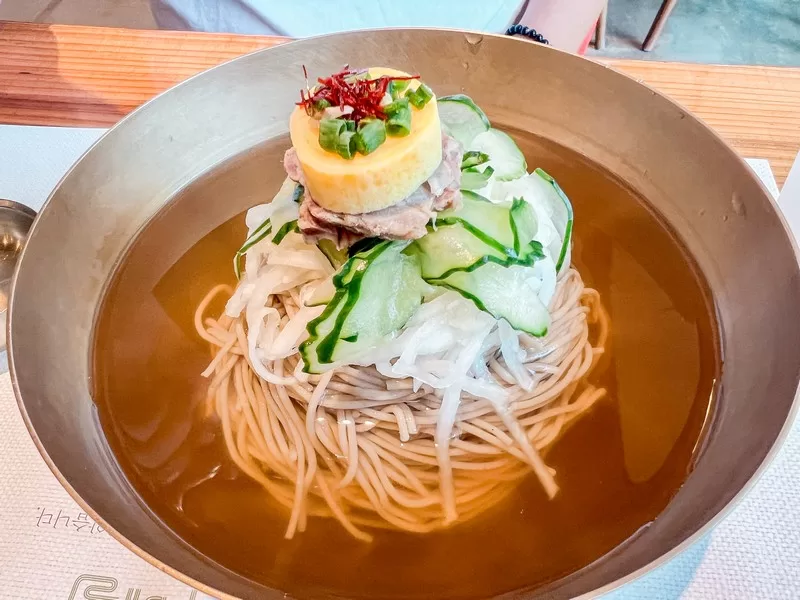
The First Village Under Hallasan (한라산아래첫마을 제주민속촌점)
Just before the ticket booth to enter the main traditional folk village, you’ll spot this restaurant. A beautiful space, they’re devoted to all things maemil (메밀), or buckwheat. For our first time there, we opted for the Jeju buckwheat noodle dish, the Jeju buckwheat cold noodle soup, and the Jeju buckwheat pancake. It was so delightful that we’ll definitely be back to try the other options on their menu.
Note that since this restaurant is actually before the ticket booth, you can go anytime and not just when you’re going to the folk village. It’s a great restaurant in the Pyoseon area.
- Address: 631-46 Minsokhaean-ro, Pyoseon-myeon, Seogwipo-si, Jeju (제주 서귀포시 표선면 민속해안로 631-46)
- Hours: Wednesday – Monday: 10:30am ~ 6:30pm (Break time: 3:00pm ~ 4:00pm)
You can easily spend half a day here learning, walking, and experiencing this folk village that was planned with a lot of painstaking historical research. Really beautiful spot to find on Jeju and a fantastic thing to do with kids in Jeju.
Did you like this post? Pin IT!
